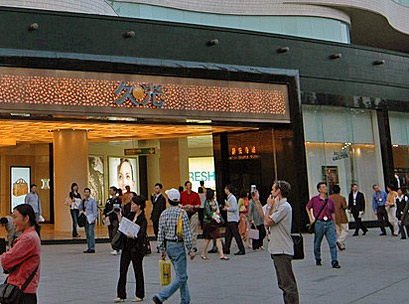Understanding local markets, putting customers at the centre of business and strengthening competitive advantage are key success factors for retailers in the burgeoning Asian markets, said speakers at the recent World Retail Congress Asia Pacific 2013.
While the Chinese market and technology remain top of mind, this year, retailers are also focusing on how to manage and meet changing customer expectations, as well as creating a seamless experience across multiple consumer touch points.
According to the analysis of trend forecaster WGSN, consumer diversity within regions and countries is important as it means tailoring the message appropriately, with innovation and brand building needing a local touch to remain relevant to the market.
It also said that finding ways to speak individually to consumers is a must, while effective strategies to harness the power of social media can create an advantage.
Gap was one of the later apparel brands to enter China in 2010, but Greater China president Redmond Yeung said the timing was key for the company to gain an in-depth understanding of Chinese consumer behaviour and preferences.
“You’ve got to be loyal to your own offering. If you’re trying to be different things to different folks it never works. When people ask me ‘why are you so late to the China market?’, I firmly believe the market wasn’t ready for us a few years back.”
Tesco’s CEO Philip Clarke said the biggest risk for retailers looking to expand in the market was over enthusiasm. He stressed the importance for a brand to develop its competitive advantage in a particular market before considering new market entries.
“Eyes too big for belly is a way to describe it. Those new markets you want to leap into will still be there for the next 15, 20 years.”
Robinsons Group of Companies’ CEO and Al Futtaim Group’s head of Asia Jim McCallum added that rising rent in Asia is another reason why retailers must make sure they have a viable business model before they enter a particular market.
For a global brand like Adidas, MD of Greater China Colin Currie said brand building and digital innovation are critical, but they must be done for a reason that is relevant to the local market.
“China is one market, but two worlds, split between lower and higher-tier cities. For higher-tier, youth, it’s about individuality: they don’t want to follow the herd. At the lower tiers it’s about belonging, and becoming cool.”
Gavin Parker, managing partner of retail consultancy The Renewal Partnership and senior advisor at Boston Consulting Group, said retailers should not assume that a format that worked in one market would work in another.
Tesco’s Clarke added the company’s corporate training and learning centre was now headquartered in Seoul to ensure innovation was being driven and refined by Asian markets.
Recognising the increasing trend of smartphone use and customer expectation of convenient shopping in emerging Asian markets, Tesco launched its mobile grocery shopping app this January and it became the country’s fastest downloaded app in just its first week.
“This is a world of hyper-speed choice, global connectivity, and you fail the moment you stand still,” Clarke said.
Communicating with customers on a personalised, individual level continues to be a key topic for Asian retailers. Hong Kong jeweller Chow Tai Fook’s MD Kent Wong said the brand is enhancing the shopping experience by launching megastores with one-to-one service areas in Shanghai and Beijing, as well as providing intensive customer relationship training across all staff levels.
Facebook’s e-commerce lead South East Asia Deepesh Trivedi added social media has created a platform for retailers to have direct and real-time influence on consumers, as “everyone wants to know what matters to them”.
Personalisation is also taking centre stage in e-commerce as Justin Chen, VP of Tmall.com, described online shopping in China is shifting from a sales platform to a consumer connection platform to allow tailored products based on consumer demands.
“Like it or not we’re getting more and more involved in social networking tools. More and more the social aspect is becoming more important in the retail experience.”
Motorola Solutions’ director of retail industry Southeast Asia Anand J Mehta told delegates that physical stores were not working hard enough for retailers as consumers now want information and service whenever and wherever they prefer. Retailers, he said, have to develop channels to deliver individual experiences within the store and through the individual’s preferred media.
But Asian retailers who are tackling online and offline integration are seeing results. Chow Tai Fook opened an online store two years ago and Wong said the sales platform had grown three-fold annually, and that it also helps drive consumers to visit the stores to experience the products.
“I believe the online platform is not only a new sales platform but it’s a way to build up a connection with the consumer,” Wong said.
Just as offline stores need to integrate to a digital product, online channels need to become more personal places to shop, says WGSN.






